|
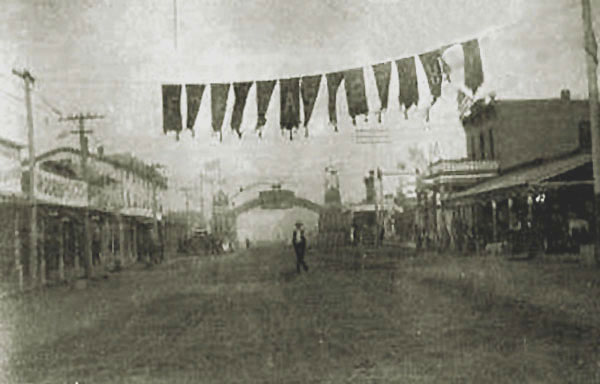
Distant View of Double Welcoming Arch for the 1904 Industrial Exposition, Second Street and Center, 1904.
With the arrival of the railroad and the discovery of oil in the Salt Creek Field about fifty miles to the
north, Casper was set to take off. In September 1904, the the citizens of the town hosted the fourth state Industrial Convention. Previous ones had
been held in Encampment, Laramie City and Sheridan.
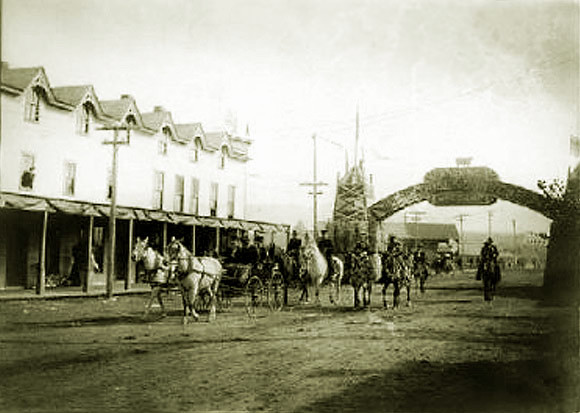
Governor Chatterton being driven past the Hotel Natrona by
Dr. Edwin P. Rohrbaugh upon his arrival in Casper for the Industrial Convention, Sept. 20, 1904.
The other side of the sign on the arch welcomed visitors to the "Land of Wool and Oil."
For the convention, the entire town was decorated with purple and yellow bunting. The all parts of the town were involved. Indians from
Wind River were encamped on the northside and the National Guard on the southside. The evening of Septembr 20 saw the opening of the convention with a speech by Governor Chatterton, a Welcoming by Mayor Kimbell, and the keynote address by Senator C. D. Clark. The theme of
Senator Clark's address was "Westward the Star of Empire Takes its Way."
perhaps inspired by Emanuel Leutze's 1861 mural in the United States Capitol Building. The mural bore the
title "Westward the Course of Empire Takes Its Way.
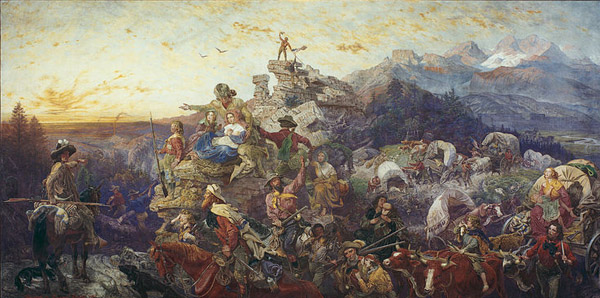
"Westward the Course of Empre Takes its Course"
Mural by Emanuel Leutze, United State Capitol, 1861
The mural, in turn was inspired by Geroge Berkeley's Lines:
Westward the course of empire takes its way;
The first four Acts already past,
A fifth shall close the Drama with the day;
Time's noblest offspring is the last.
It was a common patriotic theme of the day encompassing the belief in the manafest destiny of the
American people expanding westward into the Pacific and in Wyoming expanding westward from Casper into the
Wind River Basin.
During his stay for the convention, Governor
and Mrs. Chatterton stayed with Dr. and Mrs. Rohrbaugh.There was a distinct lack of hotel rooms. Every residence in the town was converted into a
small hotel and many visitors had to be housed in tents. Later Dr. Rohrbaugh bought a home at 236 S. Wolcott Street. The house was later moved to Sprice Street. In May 1913,
The Star-Tribune reported that the house was about to be demolished.
Dr. Rohtbaugh (1858-1950) moved to Casper in 1899 from Cheyenne. He was active in the Masons and served as Grand Master of the
Wyoming Grand Lodge and later was chairman of the State Board of Medical Examiners and as mayor of Casper. About 1919, he moved to Oregon. He was able to drive
the distance in only nine days. He later moved back to Wyoming and died in Douglas.
While
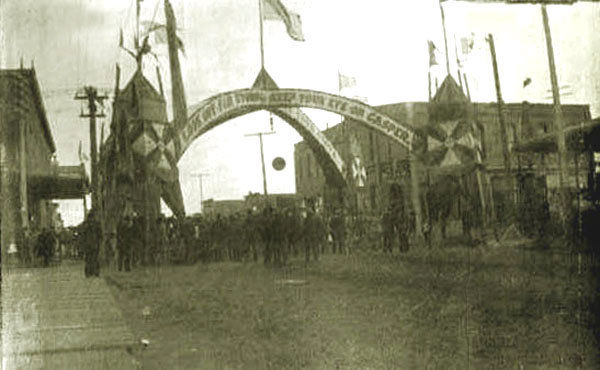
View of Double Welcoming Arch, Second Street and Center, 1904.
The sign says,"Look Out For Wyoming, Keep Your Eye on Casper."
On the second day of the convention there was the grand parade. Four military bands participated. One hundred school children on
a giant float sang the state song "Wyoming." A major element of the parade were various units of the Wyoming National Guard as well as
units of the Tenth Cavalry from both Fort Washakie and Fort MacKenzie.
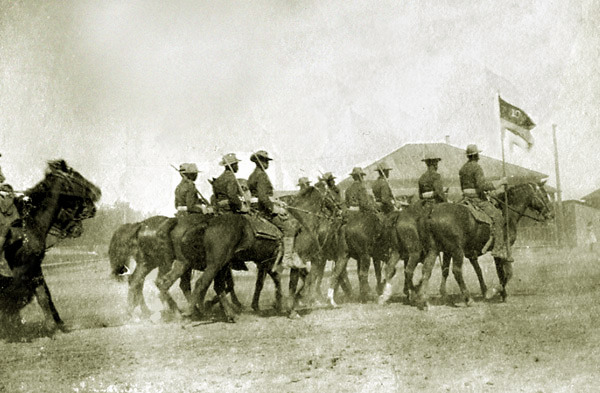
Portion of 10th Cavalry, Casper, 1904
A reception was held by the Wyoming Women's Clubs at the Odd Fellows Hall. J. E. Stimson presented an exhibit of his
hand colored photographs. The North American Copper Co. from Encampment did a display of bars of blister copper. W. C. Deming presented a
program on the resources of Wyoming and Professor Parks provided information on
Sugar Beets. At the athletic field Hugh Clark and Clayton Danks placed first and second in the Bucking Contest.
The Midway, called the Trail, greeted visitors with a sign, "Hit the Trail." Agricultural exhibits were presented at the main hall. All agreed that
Laramie County did the best presentation. Professor Parks did a program on sugar beets. educational exhibits were displayed at the
public school.
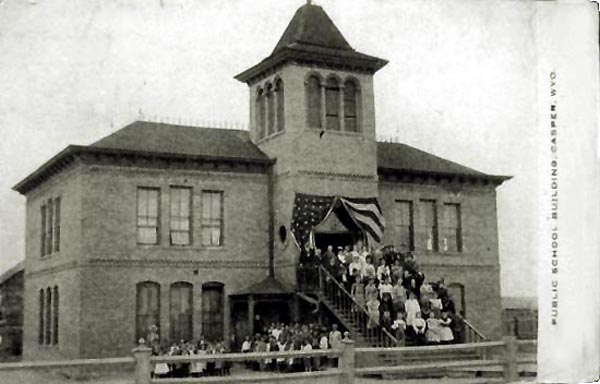
Casper Public School approx. 1910
The Central School depicted above was located at the northwest corner of Durbin Street and 3rd Ave. and replaced an earlir
public school located on South Center between present-day Eighth and Ninth Streets constructed in 1902 upon approval of a bond issue.
While construction was pending on the earlier school, the County Attorney charged the school board with grand larceny contending
that the school building was not being constructed properly. Ultimately, it turned out that
the school was constructed properly. According to Mokler, p 216,most of the town regarded the charges as a "joke." The Sheriff was ordered by the
county attorney to take the school board into custody. He did and held a "sumptuous dinner" and upon completion of dinner
released the board upon their own recognizances. It turned out the school was being built properly and the charges were dismissed.
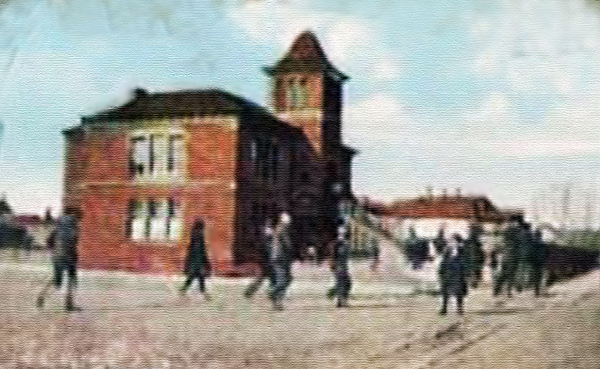
Casper Public School approx. 1910
The Tribune provided a description of the school.In the basement were living quarters for the janitor, a coal room, toilets, and a large room for "manual training."
On the main floor were four classrooms in each corner and the library. On the second floor was an
assembly room as well as more clossrooms. The classrooms were fitted with
slate blackboards rather than the composite blackboards used in the previous school. Each classroom was fitted with
three radiators and were electrically lit. Over the doors were "maize" transoms with not "gross lights to blur the vision and injur the eyes." To the
east of the south entrance a stone bore the legend, "Central School, 1910, J. H. Rhodes Architect."
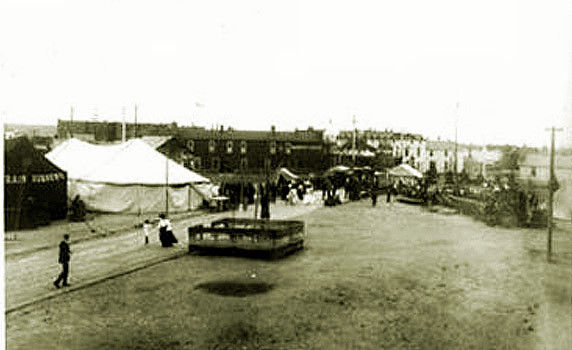
View of the Casper Industrial Convention. J. E. Stimson.
Statewide, the Convention was pronounced as success. Even the Sheridan Post, Sept 27, 1904, conceded that the
convention was "in many respects the best yet held."
With the success of the Industrial Exposition, it was decided that it was time to have a State Fair. Casper made an effort to land the State Fair. The effort failed,
the State Fair went to Douglas.
Casper Photos continued on next page.
|